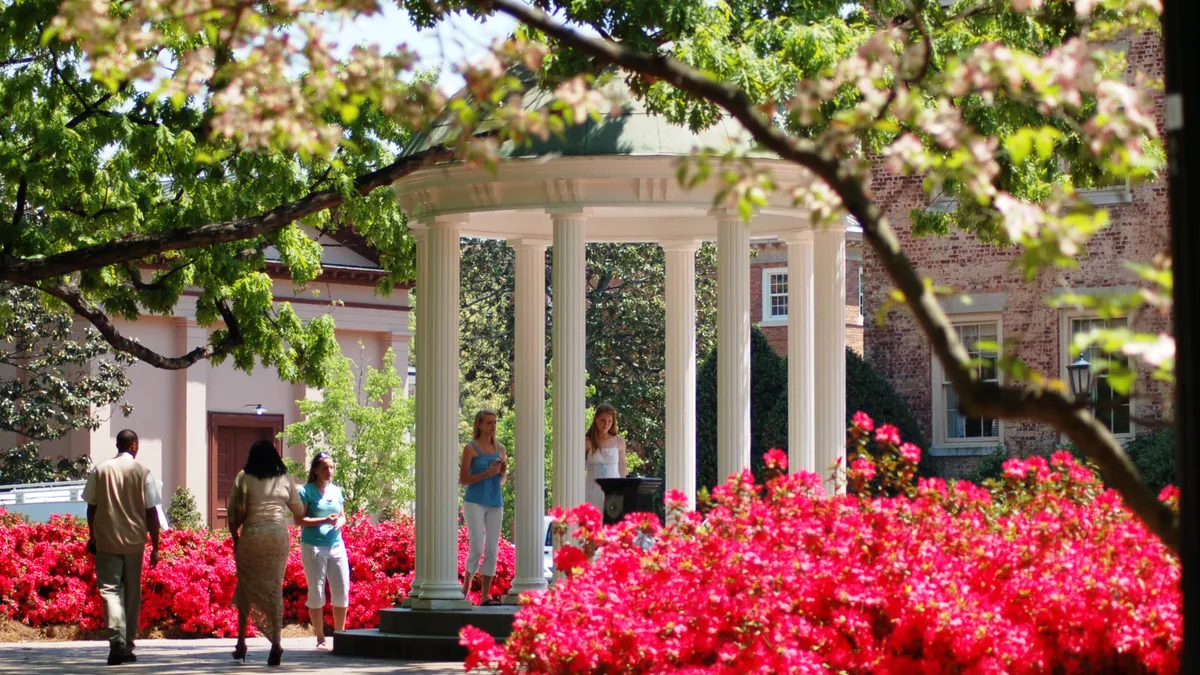Dive Brief:
- With her announcement last week that she would step down in March, three years into a five-year term, University of North Carolina System President Margaret Spellings became the latest of several college and university presidents to depart ahead of schedule. She cited the "tough" nature of the job and said the decision to step down was a personal one.
- Some of those departures have come amid high-profile sexual misconduct scandals, such as those by Michigan State University President Lou Anna Simon in January and University of Southern California President Max Nikias in August.
- More, however, have come amid — though perhaps less explicitly due to — other types of controversy on campus. For example, Benedictine University President Michael Brody resigned in August, less than a year after his contract was extended to 2022. John Kroger, president of Reed College, stepped down in June after six years at the helm of the Oregon liberal arts college. And Goucher College President Jose Antonio Bowen will leave his post in June after five years on the job. All three presidents had experienced controversy on campus.
Dive Insight:
College presidents are spending less time in the role than their predecessors, with their average tenure dropping from 8.5 years in 2006 to 6.5 years in 2016, according to data from the American Council on Education's latest American College President Study.
Meanwhile, involuntary presidential departures are on the rise, according to research from Southern Methodist University cited by The Chronicle of Higher Education. While the economic pressures of the Great Recession certainty factored in, they were not the only driver. Financial impropriety factored in heavily, along with fissures with governing boards, political controversy and dissatisfaction on campus.
Presidents are increasingly coming from outside higher education, according to recent research from Virginia Commonwealth University. In a review of 215 leaders primarily from public land-grant institutions, it found that 40.5% never had a tenured or tenure-track eligible position in higher ed, up from 33% in an earlier, comparable study. This slightly contradicts the ACE's findings in its latest College President Study that 15% of college presidents in 2016 came from outside higher education; the most popular path was chief academic officer or provost.
Today, a college president is expected to be "a multidimensional leader" capable of navigating a single college or entire system through challenges that range from implementing new technology to addressing sexual misconduct as well as keeping up with changes in learning, writes author and higher education scholar Jeff Selingo in The Washington Post. "Unconventional pathways" to the presidency were likely to become more popular in the future, he explained.
Several current higher education presidents came to the position in such a way. For example, the University of California System and Purdue University are both led by former governors. Western Governors University President Scott Pulsipher, who has an MBA and a technology business background, did not previously work at a university before taking the role in 2016. Spellings, too, took a nontraditional path, having worked in public policy, most significantly as U.S. Education Secretary from 2005 to 2009.
As colleges and universities face mandates such as those to train more students to be workforce-ready, protect free speech in an increasingly partisan environment, implement novel technology and find new sources of funding amid declines in state dollars, the skills and agendas of their leaders will also need to change. As the research suggests, greater turnover and nontraditional backgrounds may be an outcome of that shift.









